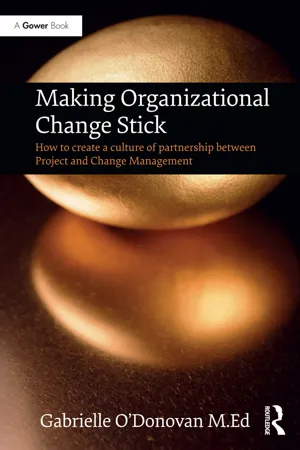The business environment is changing at an unprecedented rate, driven by the exponential growth in information and technology. Innovations such as online shopping, business models based on collaborative consumption, and declining customer loyalty are just some of the effects being felt. Adapting to disruptive change has become critical to strategic performance, dominating the business agenda like never before. Industry responses include:
• Driving adoption of cutting-edge technologies and the mass movement to the Cloud.
• Driving innovation to ensure a steady stream of cutting-edge products and services.
• Creating a customer-centric organization to give the business a competitive edge.
• Fostering a culture of ethics to retain existing customers and attract new ones.
• Restructuring and consolidating to secure a market place.
However, for any such changes to stick and meet business needs, leaders need to become as good at embedding change as they are at rolling it out. Huge fortunes are spent every year on change projects with a view to delivering on strategic visions. (Price Waterhouse Cooper forecasts global capital expenditure on infrastructure projects alone to be $78 trillion between 2014 and 2025.) Yet, despite the best brains and efforts, study after study tells us that project failure rates are unacceptably high. In fact, in a time where the only constant is said to be change, if there is another constant, it’s those high failure rates.
1.1 The preferred vehicle for organizational change
Organizational change is increasingly being introduced via projects. However, although different disciplines feed into the management of effective organizational change, industry seems to view it as largely the domain of project/programme managers. Yet, research has shown, time and time again, that Project Management bodies of knowledge, standards and practices are ill equipped to deal with the challenges posed by the management of complex organizational change.
1.2 The problem with change projects
1.2.1 A track record for high failure rates
The shortcomings of the project, as a vehicle for introducing and implementing change, has been apparent for decades:
• In the 1980s, the microelectronics industry, which saw the rapid expansion of computers and computer-based processes into most areas of organizational life, was the subject of a great many studies (Bessant and Haywood, 1985; Morris and Hough, 1987). These found that the failure rates of new technology projects was anywhere between 40 and 70 per cent.
• In 2002, a Mckinsey & Company study of 40 organizations found that those with the lowest investment had poor Change Management capabilities, while those that gained the biggest returns had strong ones.
• In 2008, an IBM survey on the success/failure rates of change projects surveyed 1,500 change leaders and found that only 40 per cent of projects met their schedule, budget and quality goals, with the biggest barriers to success listed as people factors; changing mindsets and attitudes (58 per cent), corporate culture (49 per cent) and lack of senior management support (32 per cent) (IBM Global Making Change Work Study 2008, www.ibm.com).
• In 2012, McKinsey & Company carried out a survey in conjunction with the University of Oxford on large-scale IT projects (with initial budgets greater than US$15 million) and found that 17 per cent of large IT projects go so badly that they can threaten the very existence of the company; on average, they found that large IT projects run 45 per cent over budget and 7 per cent over time, and delivered 56 per cent less value than predicted. Factors that contributed to the problem included little heed to strategy and shareholders, with projects managed purely to budget and schedule targets; a disproportionate focus on technical issues and targets; and a lack of common vision, processes and culture on the project team.
In recent years, Project Managers have tried to address these issues and improve success rates by borrowing from the Change Management toolkit, but such arrangements are typically ill conceived and vary from project to project.
The case study overleaf illustrates why Project Management needs to partner with Change Management from the outset, to deliver successful change. A projects environment that is weak on Change Management expertise is a breeding ground for ‘black swans’ – those projects that prove not only to be dud eggs but which threaten the very existence of the organization.
Deploying technology as a bolt-on using Change Management
Case study
In a global financial services organization, different technologies were rolled out during the same two-year period – various employee productivity tools, function specific tools, a sign-in security application and a host of other applications. Reducing IT costs and efforts, and future proofing the organization were key objectives, with speed of implementation and cost reduction prioritized over solution quality (which was taken as a given). In this portfolio, Change Management expertise was not employed for the majority of projects and, where it was, this occured only late in the project lifecycle. The approach indicated low Organizational Change Management Maturity (see Chapter 4, section 4.3.17) and a ‘Bolton’ approach to Change Management (see Chapter 7, Figure 7.6).
For most projects, Project Managers had to cope with Communications and Training support only. The end-user experience was not analysed up-front, so user impacts and the likely level of disruption to the business were not well understood. Even the needs of senior executive end-users were not scoped, and no business intelligence was held on what technologies and tools they were currently using. Also, there was little clarity on the project teams as to how the different technologies would impact on each other. Consequently, solutions provided by the projects were neither configured nor customized to an appropriate level to ensure that they met end-user requirements and landed smoothly in the business. When a push came to aggressively close projects out at the year-end, user issues kept below the radar beca...
